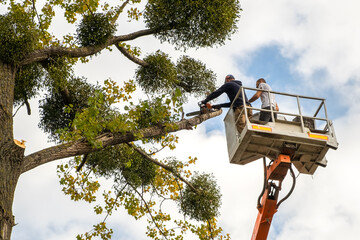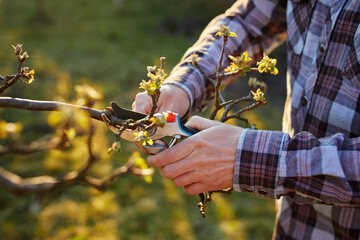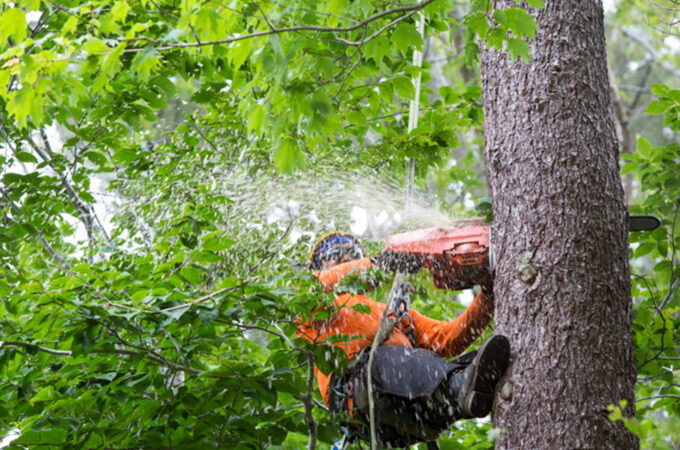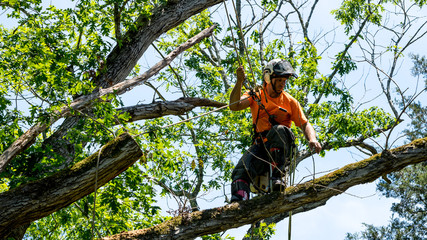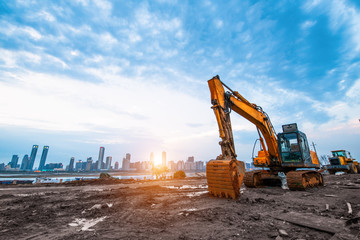What You Need to Know About Tree Care
Tree care requires more than pruning and trimming to foster strength, longevity, and beauty. A professional tree service company will diagnose various health problems and take the proper steps to address them.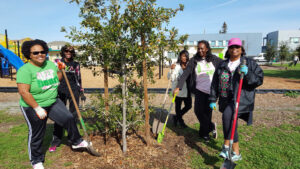
For example, removing excessive mulch at a tree’s base will prevent the buildup of moisture that can lead to rot and root disease. They will also remove structural defects and problematic limbs.
Trees are an integral part of the environment and our lives. They provide food, shelter, and shade to wildlife while beautifying the landscape and enhancing property values. Professional arborists understand the needs of trees and how to care for them. Arborists are skilled at planting, pruning, insect control, and removing diseased or damaged trees. When you hire a tree service company, look for an ISA Certified Arborist on staff to be sure they have the skills and experience to meet your tree care needs.
ISA certification is an international credential that shows a tested level of knowledge in the field of arboriculture. It is recognized by the public, industry and employers as a valuable symbol of professionalism. ISA Certified Arborists have completed a rigorous program of education and experience that sets them apart from non-certified workers.
The qualifications and experience needed to become an ISA Certified Arborist vary from job to job. Some have bachelor’s degrees in arboriculture or a related subject, while others obtain their expertise through on-the-job training and working with more experienced workers. It is important to learn first aid and safety protocols, as well as how to use the equipment necessary for climbing tall trees. Lastly, it is imperative to be familiar with the different pests and diseases that can affect trees, including the emerald ash borer, spotted lanternfly, and other harmful organisms.
Once an individual becomes an ISA Certified Arborist, their credentials are valid for three years. During this time, they can choose to re-certify through taking the exam again or by earning 30 continuing education units. Continuing education units are credits earned by attending classes and seminars that help professionals stay updated on the latest developments in the field of arboriculture.
ISA Certified Arborists work for landscaping companies, tree nurseries, parks, golf courses, private lands, utility providers and social advocacy organizations. Many also work in urban environments, helping to maintain trees and promote biodiversity in city spaces. Arborists often take on the role of supervisor and mentor, supervising the work of other tree maintenance crew members.
Pruning
When trees get overgrown or damaged, it’s time to prune. Pruning is essential to maintain health, beauty and safety by removing dead limbs, promoting new growth and preventing structural failure. An expert arborist can shape a tree or shrub to your specifications while keeping its natural form intact. Pruning can also help prevent disease by eliminating pathogen carriers (fungus and insects) from spreading to other parts of the tree or shrub.
When you are selecting an ISA or TCIA certified arborist to perform pruning on your property, be sure to ask about their experience and qualifications. They should be able to provide you with examples of previous work, and a list of services they offer. You can also ask whether they have the necessary insurance to carry out your project.
Pruning is a complex art and science. When performed incorrectly, it can damage the tree or shrub to which it is applied. The most common errors include flush cuts and stub cuts. Both of these mistakes leave large wounds that are difficult for a tree to close, leaving it vulnerable to disease and insect infestation.
To minimize the chance of these errors, it is important to make clean cuts that follow the proper angle. It is also helpful to make cuts just outside the branch collar, rather than inside it. This allows the tree to heal more quickly and reduces the likelihood of rot or other problems.
If you’re not an experienced arborist, start by practicing on smaller, less valuable plants like hedges, hydrangeas or roses. This will give you a feel for how to properly prune and the tools needed. Once you gain confidence, you can move onto larger, more valuable plants.
It is best to prune a tree in the spring or fall, when cambial activity is at its highest. This is when the cells that close wounds and promote growth are most active. However, if the need for pruning arises in summer, pruning should take place before the weather becomes very hot and dry. This is because heat and dryness can stress a plant, which makes it more susceptible to insect and disease problems.
Insect Control
While many people have a knee-jerk reaction to insect invasions and think, “I need poison now!” In fact, the best course of action is often to take a step back and examine the situation.
A professional arborist can identify the most common tree pests and diseases as well as the proper control methods to treat them without harming other parts of the plant. This saves you money and time while preserving the overall health and longevity of your trees.
Some insects damage plants by chewing or piercing their mouthparts into leaves, fruit or stems. Examples include beetles, caterpillars, grubs and leafminers. Other insects, such as squash bugs and stink bugs, defecate a sticky substance called honeydew that builds up on leaves and fruit and encourages the growth of sooty mold. They also feed by sucking juices from plant tissue. This damage results in distorted and malformed foliage.
Insects that lay eggs in the soil may be controlled with row covers, which prevent the nymphs from crawling up onto the plants. Alternatively, these pests can be controlled by hand picking or using insecticidal soaps or sprays of neem oil or pyrethrum.
Many insect damage problems are seasonal and may be caused by a host plant or specific environment. For this reason, it’s important to examine the garden for insect activity on a weekly basis throughout the season. Examine a few plants of each cultivar, looking under leaves, inside developing fruit and along the plant base and crown. Look for signs of feeding damage such as holes in leaves or fruit, distorted and/or malformed foliage and silver streaking.
If you find that your plants are being damaged, be sure to use organic pesticides if possible. These products are derived from natural sources such as plant extracts and oils, or from naturally occurring inorganic materials such as minerals. In addition, they are often allowed for use under organic production guidelines.
Tree Removal
Tree care services provide a wide range of services including pruning, cabling and stump grinding. They have specialized equipment that can help them safely remove dangerous or unhealthy trees, diagnose and treat diseases and pest infestations in existing plants and remove dead or dying trees.
When choosing a professional for tree care, ask about their qualifications and experience. You should also look for a business that is licensed, insured and bonded. Additionally, you should find out if the business provides emergency services in case of storm damage or other issues.
A well-maintained tree can add beauty and value to your property, but it is important to know when a tree has reached its end of life. Trees that have become diseased or have been damaged by a storm can become dangerous and should be removed as soon as you notice the signs.
It is also a good idea to hire a professional to remove old or dying trees before they become a hazard to people or property. If you have a dead or dying tree on your property that is in danger of falling over, schedule a consultation with an ISA-Certified Arborist right away. They will be able to assess the condition of the tree and recommend the best course of action.
Besides removing dead and unhealthy trees, tree removal services can also prune and remove brush and debris from the property. They can also turn the debris into something useful, such as logs for firewood or mulch. It is a good idea to prepare your property for the arrival of the tree removal service in advance by clearing the area where they will park their trucks and wood chipper.
The cost of tree care services can vary, depending on the size and location of the tree in question. However, a general rule of thumb is to expect the average price to be between $200 and $250 per hour. If you are unsure about the cost of tree care, it is worth asking the professional for specific details and a breakdown of the total cost.

